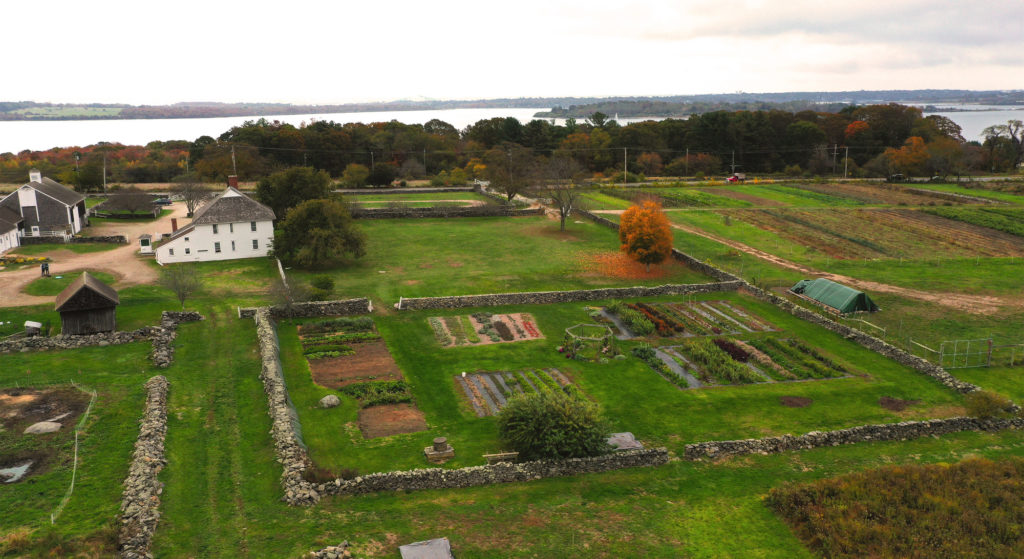 Casey Farm
Casey Farm
Stone Walls

Casey Farm’s three hundred acres are lined with more than ten miles of stone walls. Each day, through the changing weather, the walls are a gorgeous sight and frame spectacular views. Walls define how we move around the farm, shelter us from the wind, and hold in warmth or coolness. They help protect the farm animals and the crops, and make the gardens bloom longer.
At first, stone walls were just what happened once colonists deforested the land and the glacial stones underneath made their way to the surface—they had to be hauled into piles. Those piles of stones eventually helped to define fields, boundaries, and roadways. Often, in the wintertime, farmhands took time to balance the stones into more enduring structures and protect gardens and cemeteries from livestock. In Southern Rhode Island, cows, horses, and sheep were big business, so walls needed to be at least five feet tall to keep herds from climbing over them and to protect the livestock from predators. More than that, these walls were a great way to show off. The fancy walls near the farmhouse are fitted with two sides of carefully balanced stones with smaller fill in between, then topped by huge flat rocks. Only construction skill and gravity keep them standing.